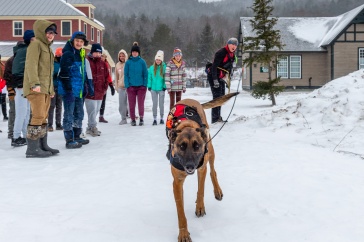
LONG BONES CAN HELP determine a skeleton’s age. Skulls yield information about age, gender and even race. But what’s a forensic scientist to do when she encounters a torso without a head, arms or legs? When you’re UNH biological anthropologist Amy Michael, the answer is to apply the relatively new technique of genetic genealogy — and crack a decades-old cold case.
Working with her former colleagues at Idaho State University, the Clark County Sheriff’s Office and the DNA Doe Project, Michael recently identified a man whose torso was discovered in an Idaho cave back in 1979 as Joseph Henry Loveless. An outlaw, Loveless was born in 1870 in Utah Territory and was likely murdered more than a century ago. It’s the oldest identity ever recorded using genetic genealogy in a forensic case.
Loveless’ limbs were discovered in the same eastern Idaho cave system in 1991, but investigators didn’t link them to the torso that had been discovered a dozen years earlier. Indeed, without a head, obvious markings like tattoos or hint of sex or age, investigators were at a loss to identify the torso. “These bones had been studied by anthropologists at the Smithsonian and the FBI and still remained unidentified, so the idea was to let genealogists have a run at it,” Michael explains.
Genetic genealogy merges forensic science and the growing trove of genetic data that’s now available thanks to the burgeoning popularity and broad availability of do-it-yourself DNA test kits like AncestryDNA and 23andMe, which allow individuals to trace their family heritage and understand aspects of their own genetic makeup. Genetic genealogists at the DNA Doe Project, an all-volunteer organization dedicated to identifying John and Jane Does, invested more than 2,000 hours to find a match with more than 31,000 possibilities, help- ing the team that included Michael crack the case in about 15 weeks.
Even with all that brainpower brought to bear, identifying the headless Loveless was hardly a no-brainer. A bootlegger and repeated jail-breaker suspected of murdering his wife with an ax in 1916, he was descended from polygamists, which complicated his family tree. What’s more, he had been known to go by more than 10 aliases during his lifetime.
“This is the strangest story I’ve come across in 10-plus years of forensic casework,” says Michael, a lecturer who teaches popular courses on cold cases and forensic anthropology. “I was shocked that we were able to make the identification after so many years.”
-
Written By:
Beth Potier | UNH Marketing | beth.potier@unh.edu | 2-1566



















































